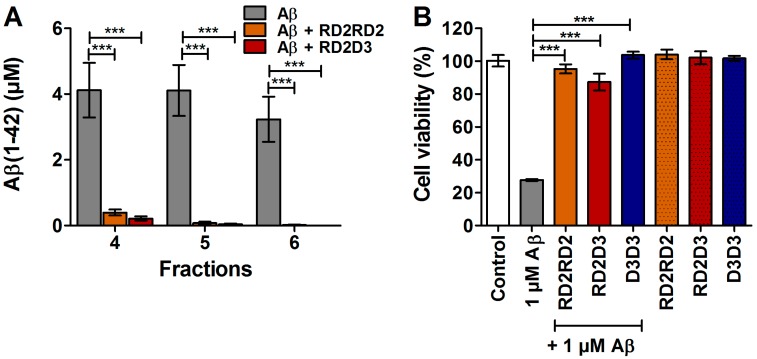Figure 1.
RD2RD2 and RD2D3 eliminated toxic amyloid β protein (Aβ) oligomers and reduced Aβ induced cell toxicity. Potency of RD2RD2 and RD2D3 to reduce toxic Aβ oligomers was demonstrated in vitro by the QIAD assay (A). Both compounds were able to reduce the toxic Aβ oligomers present in fractions 4–6. Cell viability was assessed by MTT (3-(4,5-dimethylthiazol-2-yl)-2,5-diphenyl-tetrazolium bromide) after incubation of PC-12 cells (B) with 1 µM Aβ(1–42) co-incubated with 1 µM RD2RD2 (orange), 1 µM RD2D3 (red), or 1 µM D3D3 (blue). All compounds significantly increase the cell viability after co-incubation with Aβ(1–42), without having negative impact on cell viability when incubated alone (patterned bars). Data is represented as mean ± SD (standard deviation), one-way ANOVA (analysis of variance) with Fisher post hoc analysis, *** p ≤ 0.001.

